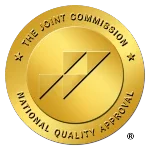Using Breathwork as a Component of Trauma Recovery
Physical and mental health are deeply connected. As a result, physical practices like breathing exercises can play a major role in coping with and healing trauma and other mental health challenges. So, what should you know about using breathwork for trauma, and how is the practice applied in treatment?
You may already know, or feel, the connections between stress, trauma, and breathing. Have you ever felt so distressed it was hard to draw breath? This is only a single example of the profound connection between breathwork and the ability of your body to feel safe.
To better support recovery from trauma, our guide will review the basics of breathwork for PTSD and Complex trauma, including why it works and how it is used in treatment settings like our trauma programs at Catalina Behavioral Health.
Accredited Trauma Treatment Programs
What is Trauma Breathwork?
“Breathwork” is another term for breathing exercises. Trauma breathwork simply refers to breathing exercises that are used to stabilize and heal from trauma through deep relaxation. People may use distinct breathwork techniques to induce specific effects or work on a specific goal at times. For example, to promote greater awareness or feelings of calm.
A diverse range of breathing exercises can be used in trauma breathwork, including some that you may have come across before. Examples include but aren’t limited to the following:
- Biodynamic breathwork (also known as biodynamic breath and trauma release system)
- Holotropic breathwork (which entails breathing in and out rapidly, alongside other steps)
- Diaphragmatic breathing (which refers to deep, diaphragmatic breaths)
Breathing exercises are easy to learn, and you can use them anywhere, which is part of why they’re such an excellent skill to have in your toolkit. As for how a breathwork practice can support trauma recovery, it is important to understand what happens in the body when someone engages in breathing exercises.
The Role of the Parasympathetic Nervous System
You may have heard about the fight or flight response before. The role of the fight or flight response is to protect us from danger, but for those of us who have experienced trauma, have post-traumatic stress disorder, or have another condition, like an anxiety disorder, it can be overactive.
This leads to prolonged stress, which can cause mental and physical symptoms or health problems. For example, high blood pressure, an increased risk of heart disease, and trouble sleeping or insomnia.
The parasympathetic nervous system stimulates “rest and digest” functions, which are essentially the opposite of the reactions caused by the fight or flight response. When the parasympathetic nervous system is activated through practices like breathwork techniques, it promotes relaxation and emotional catharsis.
How Breathing Techniques are Utilized in Trauma Treatment

As powerful as breathwork for trauma can be, many people find it essential to have a professional by their side as they move through the process. First, trauma processing can be intense, and a trained professional can help you work through it properly. Second, you want to ensure that you conduct breathing exercises properly so that you can use them with confidence.
Learning breathing exercises and processing trauma in treatment means you can get through the hardest parts of trauma healing in a safe space with a mental health professional present. It also means that when you use breathing exercises after treatment, you will know how to conduct them correctly.
At Catalina Behavioral Health, we use breathing exercises and other holistic practices in our trauma and PTSD treatment programs in combination with treatments such as standard talk therapy. In turn, our clients leave treatment with a well-rounded set of skills to use in their daily lives.
Get Immediate Help for Trauma at Catalina
Healing Trauma Through Treatment at Catalina Behavioral Health
Catalina Behavioral Health offers trauma, post-traumatic stress disorder (PTSD), and complex PTSD treatment. Despite common misconceptions, trauma is not something that only affects war veterans. Instead, any traumatic events can have lasting effects on a person. For example, natural disasters, illness, death of a loved one, domestic violence, or abuse.
While anyone can experience trauma, we believe that everyone can heal. We offer a full continuum of care so that every client we work with can get the help that they need. Catalina Behavioral Health accepts most insurance plans and will verify your health insurance before treatment begins to ensure that the admissions process goes smoothly.
Levels of Care During Trauma Treatment

At Catalina Behavioral Health, we know that each client who walks through our doors is unique. As a result, all of our clients get their individualized treatment plan, no matter what program or level of care they’re in. We offer the following levels of care for trauma survivors and those working through other mental health concerns.
For example, substance abuse, anxiety, depression, and personality disorders. If you’re unsure which level of care is best for you right now, the Catalina Behavioral Health admissions team can help.
Residential Treatment for Trauma at Catalina
Residential treatment for trauma is the most intensive type of mental health treatment. It is the highest level of care you’ll find at Catalina Behavioral Health or any other treatment center. During residential treatment for PTSD, CPTSD, or any other mental health concern, you are required to eat, sleep, and live at your treatment center for the duration of your program.
During the day, you’ll engage in a comprehensive set of treatment activities. Depending on your care plan, this may involve a combination of individual counseling, groups, medication management, life skills workshops, holistic treatments, and more.
For most people, residential treatment lasts somewhere from 28 days to three months.
Partial Hospitalization

are the second most intensive treatment programs for trauma and other mental health concerns. Rather than live at your treatment facility, PHP clients head home after treatment each day. As a PHP client at Catalina Behavioral Health, you can generally expect to participate in treatment activities 6-8 hours per day, five days a week, until your program ends.
PHP is ideal for clients unable to attend residential treatment or who require a less restrictive environment than residential treatment can provide but still need comprehensive care.
Much like residential treatment, PHP might involve a combination of individual counseling, groups, medication management, life skills workshops, holistic treatments, and other activities.
Intensive Outpatient
Intensive outpatient programs (IOP) are one step below PHP. Like PHP, you may work with professionals for a range of treatments, such as individual therapy, groups, medication management, life skills workshops, holistic treatments, and other activities in IOP. However, you’ll spend fewer hours per week in treatment as an IOP client.
IOP is ideal for those who need to work, go to school, or care for their family while in treatment. It could also be the right fit for those who need less intensive care than PHP or who are ready to step down from a higher level of care but will benefit from continued support.
Medical Detoxification
Medical detoxification or detox helps clients through the initial withdrawal process from alcohol and other drugs. In medical detoxification programs, clients get close supervision from experienced staff in a setting dedicated to making getting off of drugs and alcohol safer and less distressing.
This matters because getting off of some substances can come with severe withdrawal symptoms, and it is a time in recovery when many people are tempted to use.
Sometimes, a treatment team might prescribe medication to help reduce withdrawal symptoms, cravings, or both. You might choose to attend detox before another level of care if you face symptoms of a substance use disorder in addition to trauma.
Aftercare and Alumni Services

Those who have completed a treatment program often find that they benefit greatly from our aftercare and alumni services. This is largely because they allow you to continue to connect with a strong support system after treatment is over.
Catalina Behavioral Health offers a range of services for those who have completed treatment with us, including but not limited to support groups and sober social gatherings.
Reach Out for Proven Trauma Recovery Programs at Catalina
If you are interested in one of our programs or feel that it may be a good fit for your loved one, get in touch today. Catalina Behavioral Health has staff members available 24/7 to answer your questions or verify your health insurance coverage for treatment for free.
Call Catalina Behavioral Health for a confidential consultation to get treatment options that can help you or your loved one relieve trauma, today!
Get Licensed Trauma Treatment Options Now
FAQs on Breathwork for Trauma
Does breathwork heal trauma?
Traumatic experiences can affect us long-term and can lead to various mental and physical effects, such as high blood pressure, rapid heartbeat, anxiety, and trouble sleeping. Many people who have survived traumatic events find that these symptoms affect their daily lives.
Breathwork for trauma is used to help the body wind down; it can release trauma and support physical, psychological, social, and emotional health. Used with other forms of support, like individual talk therapy and groups that teach other skills, breathwork techniques can play a role in trauma healing.
What is holotropic breathing for trauma release?
Holotropic breathwork is a specific breathwork technique meant to help you access an altered state of consciousness. To engage in holotropic breathwork, clients are instructed to breathe in and out quickly for anywhere from minutes to hours at a time.
It can be particularly helpful for those with avoidance behaviors, commonly seen in people with post-traumatic stress disorder. Since holotropic breathwork can be intense mentally and physically and is not for everyone, you must work with a trained practitioner.





